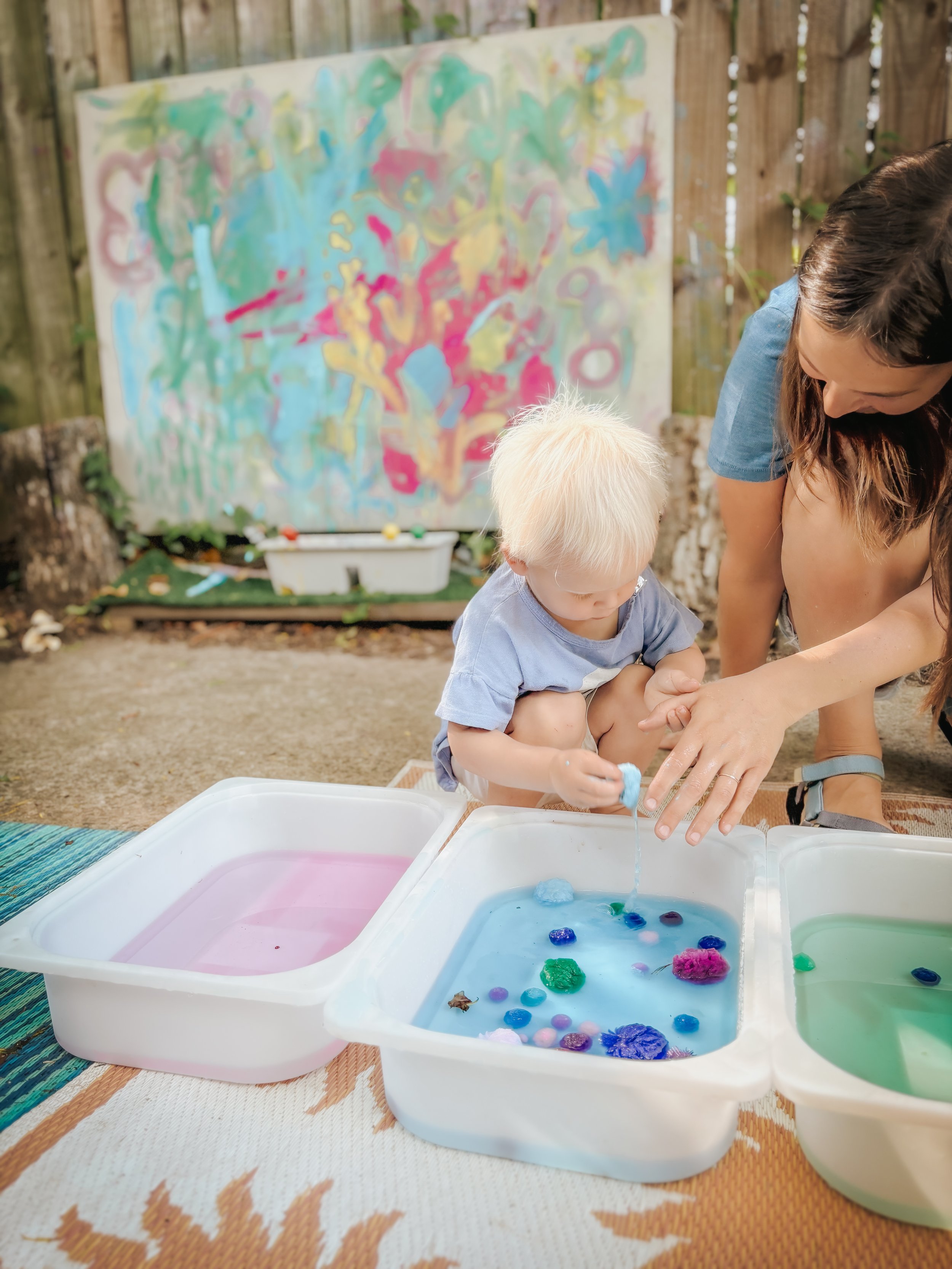The Magic of Sensory Play for Toddlers (Ages 1–3)
Understanding the Toddler Years
Between ages 1 and 3, toddlers go through an incredible burst of development: physically, cognitively, socially, and emotionally. They move from crawling to walking to climbing, from babbling to forming sentences, and from parallel play to engaging with others. Their brains are rapidly building connections as they explore the world with all their senses.
At this age, toddlers are active learners. They don’t just watch or listen- they touch, taste, carry, throw, dump, pour, and repeat. This kind of hands-on exploration is how they understand their bodies, their environments, and their relationships. And one of the most powerful ways to support this growth? Sensory play.
Why Sensory Play Matters
Toddlers are naturally drawn to sensory input. Whether it's the texture of clay, the sound of pouring rice, or the cool splash of water, sensory play helps them:
Strengthen fine motor skills
Build new vocabulary
Learn about cause and effect
Regulate emotions
Engage in deep focus and concentration
Develop early problem-solving skills
It’s not just fun, it’s foundational.
a toddler explores bottles, cups and liquids by practicing dumping and pouring.
What Are Play Schemas?
Toddlers are often drawn to repeating certain types of actions—these patterns are called play schemas. They’re completely normal, developmentally important, and a key to understanding your child’s play!
Here are a few common schemas we see in the studio:
Transport Schema
Moving objects from one place to another—carrying, dumping, collecting. Think scooping beans into buckets or hauling sticks across the yard.
Transformation Schema
Mixing, mashing, combining. This shows up when kids mix colors, stir potions, or squish together clay and dirt.
Trajectory Schema
A fascination with movement—throwing, dropping, climbing, or watching water pour.
Enclosure / Container Schema
Filling and emptying, placing items inside things, building small enclosed spaces.
When we notice these schemas, we can better support toddlers with open-ended materials that meet them where they are.
a toddler explores pom poms in water with their mom’s companionship
How to Support Sensory Play at Home
You don’t need fancy toys to create meaningful sensory play. Everyday materials work beautifully:
Cooked or dry pasta
Rice, oats, or dried beans
Shallow pans of water
Muffin tins, scoops, and spoons
Scarves, cardboard boxes, and empty containers
And yes, it will get messy. But the mess is part of the magic. Sensory play allows toddlers to explore, experiment, and build confidence in their choices.
Final Thoughts
Sensory play gives toddlers the freedom to follow their curiosity and make sense of the world around them. When we step back and offer open-ended invitations to play, we give children the tools they need to grow with creativity, autonomy, and joy.
Whether at home or in our backyard studio, these messy moments are truly where the magic happens.
a toddler uses various materials to mix, match and transform.



